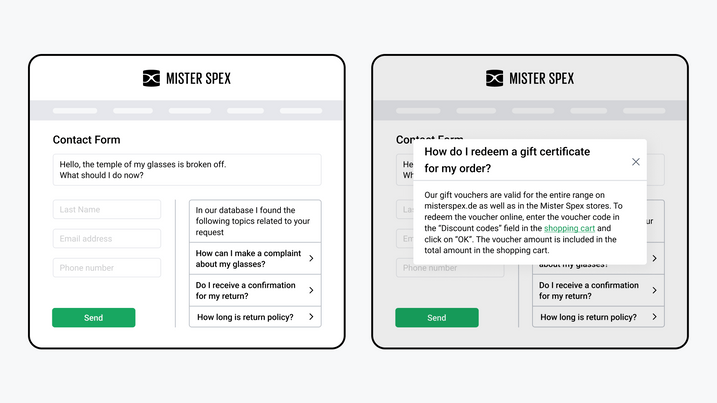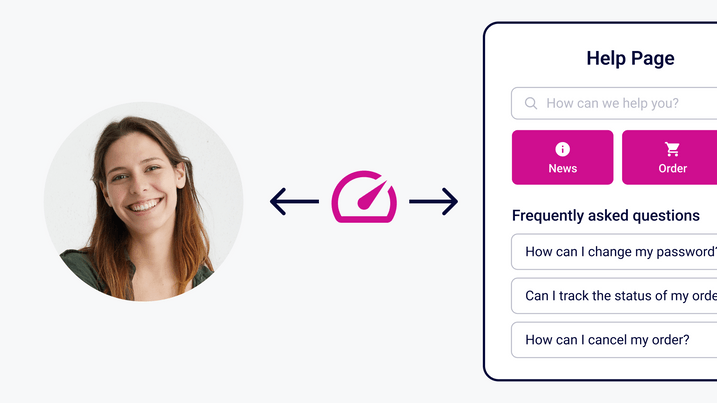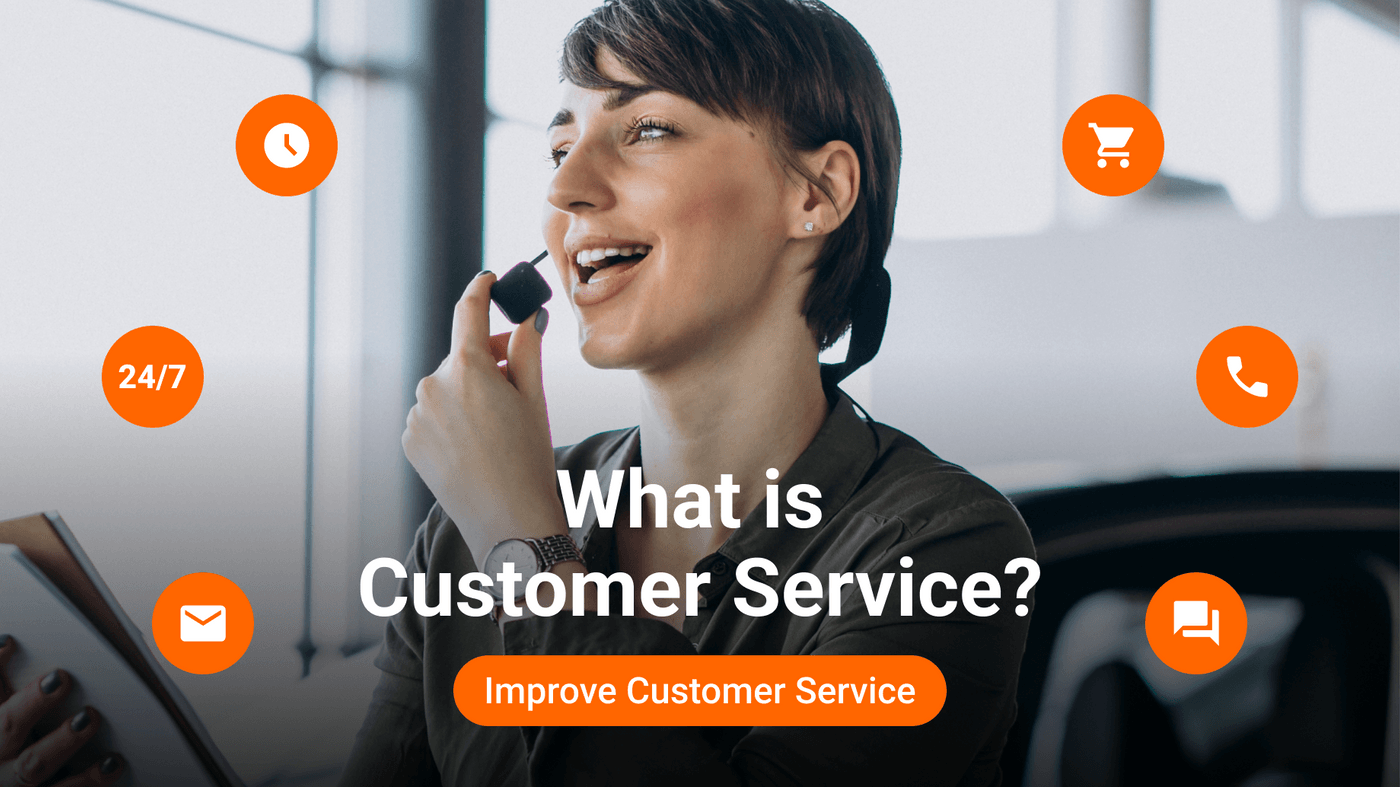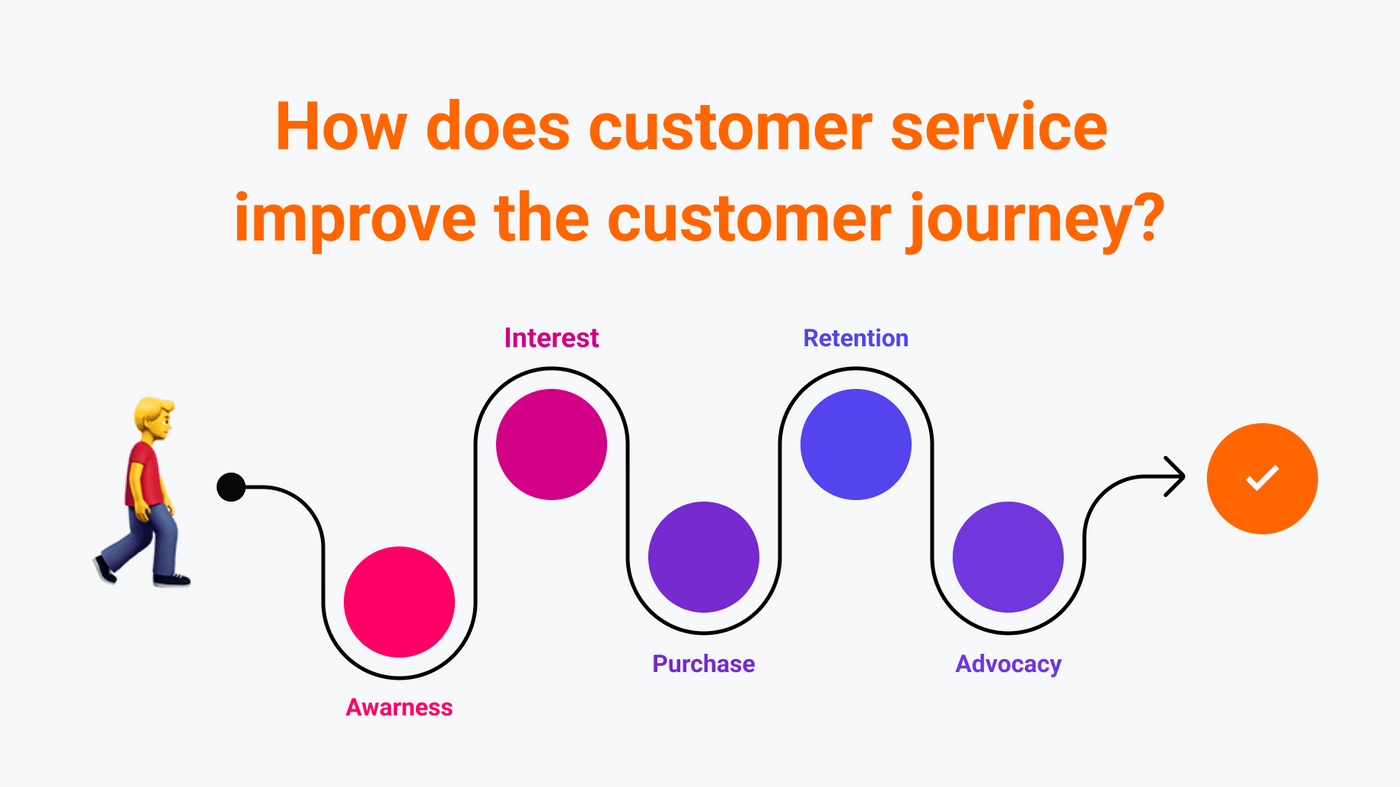Customer Service
Customer Self Service - Definition and Benefits
Optimize customer satisfaction and efficiency by implementing a self service solution on your website with Customer Self-Service.

What is customer self service?
Self service is a concept in which customers independently use certain services or products without having to rely on the help of staff. This principle is used in various sectors, such as retail, gastronomy and IT.
Examples of self-service include ATMs, self-service checkouts in supermarkets, online banking or self-service portals in software applications or on websites. The main advantage of the self-service concept is that it increases efficiency and offers customers more flexibility and independence.
Common forms include FAQs, knowledge bases and online discussion forums.
In customer self-service (CSS), customers can solve their questions or problems independently and without direct interaction with a customer service representative. Various tools and technologies such as FAQs, chatbots, knowledge databases, forums, videos or tutorials can be used in customer service.
The following features characterize customer self-service:
- Self-sufficiency
- Independence of location
- Time independence
- Works without service staff

Customer self-service offers many benefits in customer service.
Where can you find self-service in everyday life?
In retail, self-service enables customers to select items themselves from shelves or vending machines and pay at self-service checkouts.
In gastronomy, guests can select and collect their own food and drinks from buffets or order terminals.
In the IT sector, self-service portals allow users to configure software or services independently without having to rely on support.
Why is customer self-service so important?
Customer self-service offers various advantages for both customers and the company.
- Reduction of the workload for customer support
- Efficient problem resolution
- Round-the-clock availability
- Cost savings
- Increased customer satisfaction
- Improved service quality
- Promotion of customer loyalty
Self-service is therefore important because it focuses on both customer and employee satisfaction.
Types of self-service systems
As already mentioned, self-service can be found in many areas of our everyday lives. There are various types of self-service systems that are used in different industries:
- Self-service checkouts: In supermarkets or retail stores, they allow customers to scan and pay for their purchases themselves.
- ATMs: Customers can withdraw money, make deposits, check account balances and make transfers.
- Ticket machines: Customers can buy or collect tickets on public transport or at event venues.
- Self-service portals: Online platforms where customers can manage contracts, view invoices or make support requests.
- Information kiosks: Interactive terminals that are available in shopping centers, airports or train stations and provide information, directions or other assistance.
- Self-check-in: In hotels or at airports, they enable customers to check in independently and receive their boarding passes or room keys.
What customer self-service options are available and how do they work?
FAQ: Information pages on frequently asked questions
FAQ is a collection of (frequently asked) questions and their answers. This question-and-answer format is suitable for compiling information in a clear manner. Customers often search a company’s information page for solutions before contacting customer service by email or phone.
A well-designed FAQ should help customers find an answer to their problem quickly and easily.
Optimal features of a FAQ:
- dynamic real-time search
- context-based auto-completion
- display of current frequently asked questions and answers

OMQ Help in use at Call a Bike: The FAQ of Call a Bike from Deutsche Bahn shows how an optimal help page is structured.
Help pages and knowledge bases
Help pages and knowledge bases are two popular self-service tools that help customers get important information to clarify their questions on their own. Both tools provide structured information presented in organized categories and ideally include a search function with autocomplete. By providing these tools, companies can improve their customer experience by enabling customers to find answers to their questions quickly and easily.
Help pages differ from FAQs in that they offer more self-service tools than a mere collection of questions. In knowledge databases, information is written and stored in the form of articles. In addition, the knowledge available in the company (from employees, from databases, …) is collected and made generally accessible.
Both service tools have the following possible content in addition to a question and answer collection:
- Description of products and services
- User manuals
- Customer forums for exchange with other customers
- Guidelines
- Glossary: Explanation of (industry-specific) terms
Chatbots in self-service
Chatbots offer customers a quick and easy way to ask questions and get answers in real time. They can be connected via various channels such as the website or instant messaging apps like WhatsApp, Facebook Messenger and Telegram. A major advantage of chatbots is that they enable 24/7 communication between customers and companies. Some chatbots can also perform actions in the background, such as changing a delivery address. Overall, chatbots offer companies the opportunity to improve their customer service and make it more effective.
Features of an ideal chatbot:
- AI-based chatbots understand the intention of the customer message
- Communication in the natural customer language
- For individual problems, customer is redirected to a service agent: e.g., via live chat as with Userlike

The OMQ Chabtot in use at Jumpers Fitness: The chatbot at Jumpers Fitness answers customers’ questions and is also able to perform actions on its own.
Automated contact form: Customers describe requests in a message field
The contact form is a common way for visitors of a website to contact the company or organization. It is not a classic self-service tool because customers normally describe their concerns in a message field and are then contacted by customer service. With the help of an AI system, the contact form becomes a self-service tool because the AI understands and processes the intention behind the message. The smart contact form immediately provides a suitable solution suggestion, so that in most cases the message is not sent.
Properties of a contact form with AI:
- Responds proactively
- Understands the language of customers through AI
- Gives the same information as other service channels (e.g. call center)

OMQ Contact in use at Mister Spex: The example of Mister Spex shows how the automated contact form can be used as a self-service tool.
What is the benefit of customer self-service for customers?
Providing different communication channels in customer service is of great importance, as customers want to choose their preferred way to find solutions as quickly as possible. Most customers prefer immediate service without long queues or delays in responding by email. 24/7 availability is essential in this regard. Companies need to ensure that information gets to customers quickly and with high quality in order to gain their trust and create long-term bonds.
The goal of CSS is to provide customers with a faster and more convenient way to find answers to their questions or solutions to their problems without having to wait for help from a customer service representative. This increases efficiency and customer satisfaction by enabling customers to receive assistance more quickly and independently.

Self-service saves time and thus ensures greater customer satisfaction.
What are the benefits of customer self-service for companies and service agents?
Another benefit of customer self-service is that companies can save resources by requiring fewer employees to handle customer inquiries. This can also help reduce customer service costs and improve the company’s profitability.
- Recurring requests are not only a problem for customers. Service staff often answer the same questions and perform the same tasks, which can become routine and frustrating.
- Employees are relieved because they no longer have to perform standard tasks and thus have more time to concentrate on special tasks.
- Companies get an overview of what is often asked and what customers are interested in.
Tips for ideal customer self-service
Self-service is not just about providing information. The way in which the information is disseminated plays a key role in providing an ideal customer journey.
The following tips can be helpful here.
Highlight popular FAQs
The main concerns of customers should be arranged according to the frequency of inquiries. If these are displayed prominently in the self-service portal, customers who have similar questions can find a solution even faster. The FAQ section should also be continuously updated and organized.
Use of visual aids
Visual aids such as screenshots and videos often help to illustrate issues. Customers can then use these as instructions.
Keeping content up to date
It is clear that a self-service platform should not simply be uploaded and then ignored. Even if it does a lot of work for customer service, it should be checked and updated regularly. Keeping the knowledge base and FAQ areas up to date is crucial to the success of self-service.
Optimize search behavior
Implement a user-friendly search field. Uses tags and keywords to deliver relevant search results. Monitors search queries to identify and close content gaps.
Mobile Optimization
Ensures that the self-service portal is accessible for mobile devices. Mobile optimization is important as many websites are not yet mobile friendly.
Conclusion on customer self-service
In customer self-service (CSS), customers can solve their questions or problems independently and without direct interaction with a customer service representative. Various tools and technologies such as FAQs, chatbots, knowledge databases, forums, videos or tutorials can be used in customer service.
There are several forms of CSS, including:
- FAQs: information pages on frequently asked questions (like OMQ Help).
- Help pages and knowledge bases: structured information on products and services as well as user guides and forums (like OMQ Help)
- Chatbots: quick and easy way for customers to ask questions and receive appropriate answers in real time (like the OMQ Chatbot)
- Contact form: Customers describe their concerns in a message field (such as OMQ Contact)

Automation makes it possible to turn various customer service channels into self-service channels.
The benefit of CSS for customers is that they can find answers to their questions or solutions to their problems more quickly and conveniently, without having to wait for a customer service representative to help them. Companies can use CSS to improve customer satisfaction and build long-term relationships with their customers.
Benefits for the user and the company:
- Fast response time. Customers expect an immediate response to any questions (the longer the response takes, the more likely customers are to turn away from the company or give a bad rating).
- Independence of customers
- Frequently occurring customer problems are solved without the involvement of service agents; service agents deal with individual inquiries.
If you also want to integrate self-service channels into your customer service quickly and easily, please arrange a no-obligation demo with us. We will show you how to integrate customer self-service in a way that suits your company. If you have general questions, you can easily ask us by contacting.


